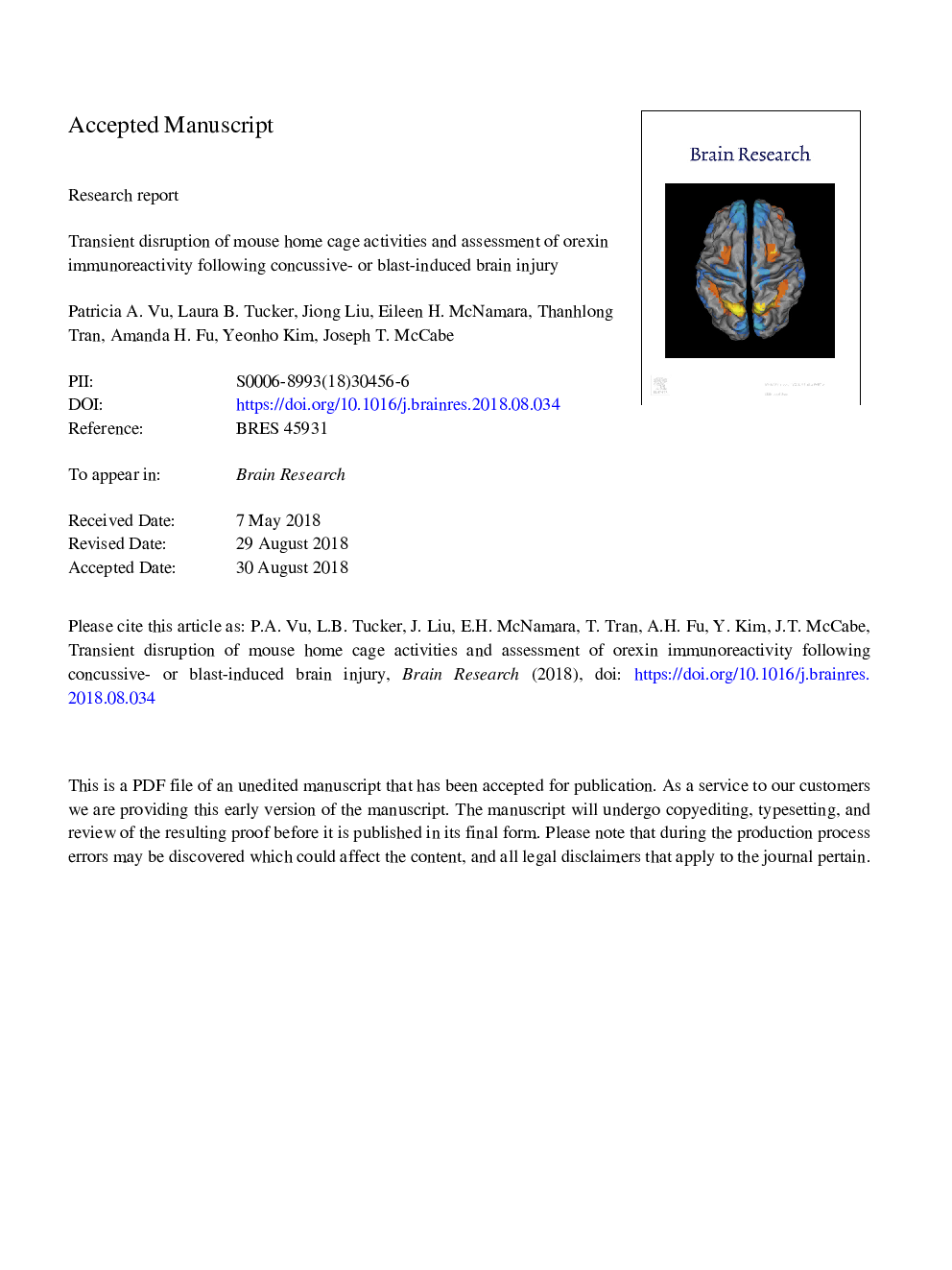| Article ID | Journal | Published Year | Pages | File Type |
|---|---|---|---|---|
| 10106908 | Brain Research | 2018 | 55 Pages |
Abstract
The employment of explosive weaponry in modern warfare exposes populations to shock wave-induced and impact-related brain injuries. Among the most common clinical complaints resulting from traumatic brain injury (TBI) are sleep-wake disturbances. The current study assessed the acute effects of mild concussive brain injury (CBI) and mild blast wave-induced brain injury (BTBI) on mouse behavior and orexin-A expression. Male C57BL/6J mice were exposed to CBI, BTBI, or sham procedures. Injured animals and their shams were further divided into the following subgroups: 24-h survival in standard group (SG) housing, 72-h survival in SG housing, and 72-h survival in Any-Maze cages (AMc). AMc enabled continuous monitoring of home cage activities. BTBI caused significant but transient decreases in wheel running and ingestive behaviors 24â¯h post-injury (PI), while CBI transiently decreased running and water intake. BTBI resulted in general hypoactivity in the open field (OF) at both PI time points for SG-housed animals. In contrast, CBI did not cause hypoactivity. Mice subjected to CBI traveled more in the center of the OF at both time points PI, suggesting that CBI caused reduced anxiety in mice. Increased activity in the center of the OF was also seen at 24â¯h PI after BTBI. CBI treatment caused increased CD11b immunostaining. However, neither injury was accompanied by an alteration in the number of orexin-A hypothalamic neurons. Taken together, shock wave exposure and concussive injury transiently reduced mouse activities, but some differences between the two injuries were seen.
Keywords
AmCHomogeneity of varianceSleep-wake disordersHOVBlast-induced traumatic brain injurybTBIkilopascalskPaTBSTNeurotraumamTBICCIPSISWDsHRPpost-injuryDABIgGEDSABS3,3′-diaminobenzidineBSACOVTraumatic brain injuryMild traumatic brain injurybovine serum albuminOrexinimmunoglobulin analyses of varianceANOVAConcussionexcessive daytime sleepinessRoom temperatureLight emitting diodeLEDCbiCognitionCoefficient of VariationactivityCerebrospinal fluidCSFMouseOpen fieldMicrogliaHorseradish peroxidasecontrolled cortical impact
Related Topics
Life Sciences
Neuroscience
Neuroscience (General)
Authors
Patricia A. Vu, Laura B. Tucker, Jiong Liu, Eileen H. McNamara, Thanhlong Tran, Amanda H. Fu, Yeonho Kim, Joseph T. McCabe,
